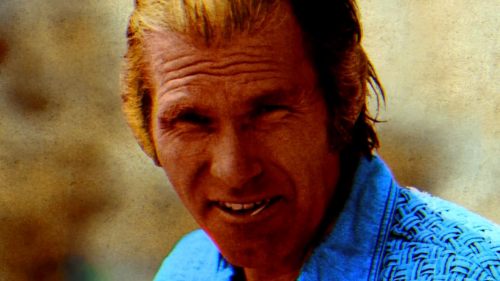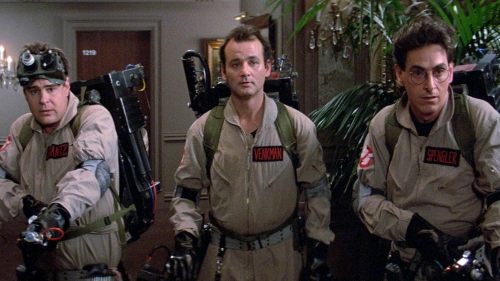Collins’ Crypt: VALENTINE Is (Not) Based On A Novel
Whenever a film comes out that's based on a book, there's always someone who will get angry at "spoilers" if one discusses the source material, even if it's been around forever (see also: Game of Thrones). But an unusual instance of this sort of thing occurred in 2000, when the film Valentine went into production and press releases announced that David Boreanaz would be making his big leap from TV into movies by playing the film's killer. If the film had been a faithful adaption of Tom Savage's 1996 novel, this would not be any more of a spoiler than saying Ted Levine had been cast as the killer in Silence of the Lambs, as Savage's version of the murderer (dubbed "Valentine") does not wear a mask and large chunks of the book are told from his POV. The novel has twists, yes, but it would be difficult for anyone to discuss the casting of a straight version of its story without noting who played the murderer, so I'm sure those trade writers didn't think they were doing anything uncouth.
Unfortunately for Jamie Blanks and the rest of the people who were hoping Boreanaz's eventual outing as the killer would be a secret, they weren't really using the novel for much beyond the basic premise, opting for a more traditional masked whodunit slasher. On the new Blu-ray from Scream Factory, Blanks jokes that the film is "based *on the title* of the novel Valentine by Tom Savage", but it's really not much of a stretch - the film has next to nothing else to do with what Savage wrote. And I'm not saying this as some hardcore fan whining about changes the same way people are saying the new Pet Sematary is "ruining the book" or whatever; they are almost entirely different stories from top to bottom. Both concern a group of women who are targeted by a man whose advances they rebuked in their younger days, and he sends them creepy Valentine cards, but that's about it. The women bare no resemblance to their film counterparts (one girl's boyfriend is an artist, and there's a character named Dorothy, but the context for everything else about them is so different it's probably just a coincidence), the initial incident occurred at a different stage in their lives (grade school in the film, college in the novel), etc, etc. Outside of maybe World War Z, I can't think of another "book turned movie" that have less to do with each other.
The novel (set in New York; the movie was shot in Vancouver but they say it's San Francisco, though I'm not sure why, as Vancouver has historically been an excellent substitute for the Big Apple) mostly focuses on just one of the women, as opposed to the ensemble nature of the film. Jill Talbott is a successful mystery writer who is finishing up a publicity tour and about to start working on a new book when she receives a disturbing Valentine's Day card in the mail, about two weeks prior to the holiday. She tries to write it off as a prank - perhaps from her boyfriend, Nate - and ignore it, but another one comes and she starts rightfully getting worried. And after some soul searching she recalls Victor Dimorta, an awkward and "ugly" student from her college who has a good reason to hate her: seems that back in their college days, she had become friendly with a trio of popular/pretty types who hated him and wanted to play a prank on him, using Jill to help pull it off.

Have you seen Terror Train or Slaughter High? OK, then you've pretty much seen this prank in action: one girl pretends that she's interested in him, gets him to arrive somewhere, and then reveals it's all a joke to embarrass him in front of others. Unfortunately, unlike Kenny and Marty in those films, Victor doesn't freak out and nearly get himself killed - he turns violent. One girl's nose is broken and another is scratched up, and he is subsequently expelled from the school. Naturally, the girls lie about their involvement, claiming he just broke into their room intending to rape them, so they suffer no consequences outside of Jill getting fed up with their crap and cutting all ties with them, forgetting all about it over the following fifteen years or so. But Victor, it seems, has not forgotten - and it turns out that after his expulsion he murdered his parents and went to jail, where he bulked himself up, learned a great deal about a variety of topics, and (upon release) got plastic surgery to complete his transformation from gawky loser to handsome hunk.
Interspersed with the present day action revolving around Jill are Victor's accounts of how he's already killed the other three women, on each of the preceding Valentine's Days. His MO was always the same: he would create a new identity and sometime in late January worm his way into the life of one of his targets, so that by the time February 14th rolled around she'd be hoping he'd pay her a visit. And he planned their deaths in such a way that there would be little chance of anyone seeing the pattern: one he made look like a skiing accident, another a house fire, and the other was never found at all (he buried her in the hills), but since she lived in Hollywood and was trying to make it as a screenwriter, no one thought much about her disappearance as her few local friends just assumed she gave up her dream and moved back home. In all three cases, they have no idea who he really is until they're moments from death, and since they're told from his perspective we know how truly angry and sick he is - the word "incel" might come to mind to any modern reader.
Reading these flashbacks makes it clear what's happening in the present day: someone in Jill's life isn't who he claims to be, and therein lies the main reason why the book wouldn't make for the best translation to the big screen, as it is still a mystery but in a form that only works on the written page. By switching perspectives, Savage is able to identify Victor in some chapters as he recounts his past murders or watches Jill in the present, but also introduce him as another man by giving him an alias and relying on the fact that readers can't actually see these characters; our mental image of Victor is obviously not going to be the same one we have for ______, allowing us to be stunned when they're revealed to be one and the same. It's not the best book ever written (some of the dialogue is cringeworthy; the film actually improves on this quite a bit) but it's a solid page-turner, and its big twist is handled well (though it requires a few pages of "this is how it worked" kinda stuff), making it fun to go back and revisit the scenes with the character that you now know is the murderer.

And that's the thing: the killer is hiding in plain sight to us, the reader, but obviously in a feature film it wouldn't work as the actor would have to be playing two characters without the audience knowing he's supposed to be the same one, which would require a disguise of some sort (not a mask, we're talking "fake mustache and glasses" kind of covering). This is the same problem that was faced for the makers of I Know What You Did Last Summer, as their tormentor in the book is two characters (a love interest for one and friend to another) that readers wouldn't know was the same person until "unmasked" near the end, and that movie turned out OK (and hugely successful) so you can't blame the Valentine folks for thinking they could do it as well (ironically, Blanks first got attention thanks to his fake trailer for I Know, which landed him the Urban Legend job). And if you don't believe that this could never work in a movie, track down the 2008 horror flick Amusement, because hilariously it's inadvertently a closer adaptation to Valentine, complete with the same "geeky guy getting revenge on the pretty girls" plot but where they actually DO try to disguise an actor so he can play three roles and then theoretically surprise the audience when they're all revealed to be the same guy. It's a terrible movie and any astute audience member would notice the actor's disguise instantly; hell even Christopher Nolan couldn't even really pull it off with "Fallon" in The Prestige and the whole movie didn't hinge on that reveal the way these would.
Needless to say, they had to make changes anyway, so rather than "screw up" Savage's story they opted to just tell their own. That said (and spoilers for both book and movie are incoming, so skip this paragraph if you plan to read the book!), it's kind of funny that the movie ended up staying true to one of the book's twists: the killer is again the protagonist's nice guy boyfriend. While the film tries to offer a true ensemble (Sex and the City, then a phenomenon, was an inspiration), Marley Shelton's Kate is clearly our Final Girl even before the others are offed, and also the only one with a long term boyfriend (though they're currently on a break due to his drinking). And when the police age up a picture of young Jeremy Melton (the film's wronged geek; they didn't even keep the killer's name!) the results look absolutely nothing like David Boreanaz, seemingly clearing him as a suspect. To be fair, Jeremy was supposed to be a red herring of sorts, with earlier drafts making Jessica Capshaw's character the killer until it was changed to Kate's boyfriend Adam without anyone going back to explain the physical discrepancy (the novel uses a plastic surgery explanation, so maybe we can go with that), but I like that their clumsy switch inadvertently gave the film another of its incredibly thin ties to its source.
But hey, instead of a thriller we got one last masked slasher movie from the post-Scream era (and a holiday driven one at that!), one I happen to like quite a bit. I've been bugging Warner Bros on social media for years to give it a Blu-ray, but now that Scream Factory has access to WB's library I'm obviously much happier they handled it instead, giving us a huge special edition (the screenwriter interview runs for over an hour and there's a whopping TWO hours' worth of behind the scenes footage!) and a gorgeous new transfer to boot. And I think it's due for reevaluation; the women in the film are better developed than 95% of any "slasher victims" I've ever seen, and have a genuine friendship as opposed to the "do these people even like each other?" feeling I get from so many other body count flicks. Plus, for what it's worth they're better written than their "counterparts" in the novel, making it easier to recommend to a newcomer. Perhaps most enticing for the current times: there's not a single decent man in the entire movie, all of whom get their comeuppance (either from the killer or one of the women putting him in his place - shoutout to Denise Richards and her candle!), so it will probably play great to women who may have written it off. Bonus: you can go read the book after and get a completely different story!



